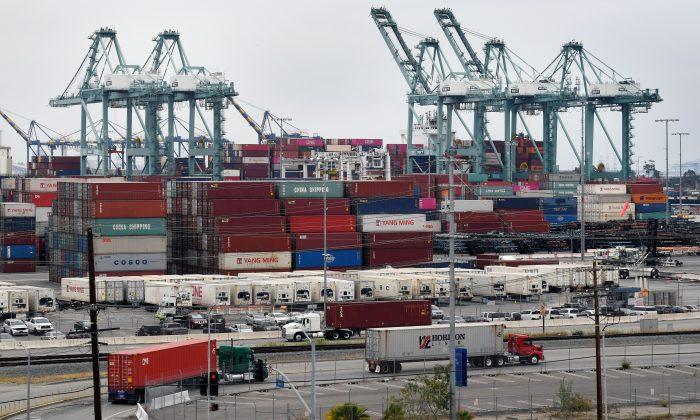News Analysis
The World Trade Organization (WTO) says it expects global merchandise trade for this year to decline anywhere between
13 percent and 32 percent because of the CCP virus pandemic.
Almost all regions will suffer double-digit declines in trade volumes in 2020, with trade likely to fall more steeply in sectors characterized by complex value chain linkages, such as China, South Korea, Singapore, and Mexico, the WTO predicts.
The new report is a dramatic reversal of the organization’s prediction just six months ago that trade volume growth “should
accelerate slightly” to 2.7 percent in 2020.
Even amid “escalating trade tensions,” including the Sino–U.S. trade war and
Brexit in the European Union, WTO Director-General Roberto Azevêdo had
stated optimistically in October 2019, “The multilateral trading system remains the most important global forum for settling differences and providing solutions for the challenges of the 21st-century global economy.”
In their optimistic 2020 scenario, WTO economists project that global merchandise trade will fall to 2013 levels this summer, before spiking back by year-end to new highs in 2021. In a pessimistic scenario that WTO economists called “ugly,” world merchandise trade would collapse to levels not seen since 2005.
Many analysts have expressed confidence that the same type of monetary and fiscal policy employed to provide temporary income support to businesses and households during the 2008 to 2009
Great Financial Crisis would again succeed in countering the current global downturn.
But WTO economists
warn that on top of the human suffering caused by the
CCP (Chinese Communist Party) virus, known as the novel coronavirus, “whole sectors of national economies” have been deeply affected. Even if the disease is brought under control this summer and with the continuing need for social distancing, it’s unclear when tourism will return so that hotels, restaurants, and nonessential retail trade can reopen.
The International Labor Organization (ILO)
commented on April 7 that the pandemic is having a catastrophic effect on employment hours and earnings. The ILO expects that 6.7 percent of global working hours, equivalent to 195 million full-time jobs, will be wiped out during the second quarter. Asia and the Pacific will lead with 125 million job losses, followed by 12 million in Europe, and 5 million in the Middle East.
The WTO
expects the economic downturn from the pandemic will have a bigger hit on value chains than the 2019 trade disputes with China. With backup production shuttered across the globe, complex electronics and automotive value chain linkages have been decimated.
According to the Organization of Economic Cooperation and Development database, the foreign value-added share by nation for electronics exports is about 10 percent for the United States, 25 percent for China, 30 percent for South Korea, 40 percent for Singapore, and more than 50 percent for Mexico, Malaysia, and Vietnam.
The wide range of possibilities for the predicted range of GDP declines is explained by the unprecedented nature of the health crisis and the uncertainty around its precise economic impact, the WTO stated.
WTO estimates for the recovery in 2021
depends “largely on the duration of the outbreak and the effectiveness of the policy responses.”
Azevêdo
stated, “This crisis is first and foremost a health crisis which has forced governments to take unprecedented measures to protect people’s lives.”






Friends Read Free